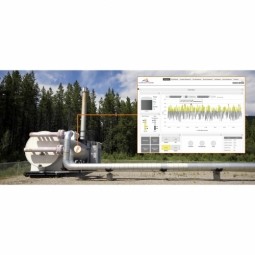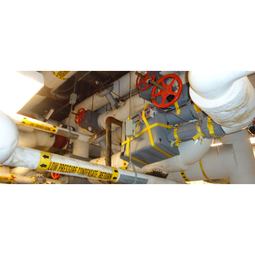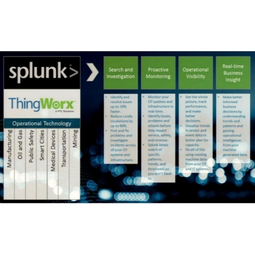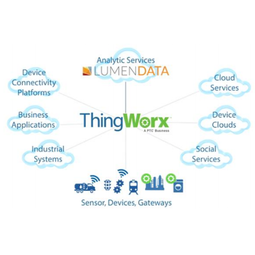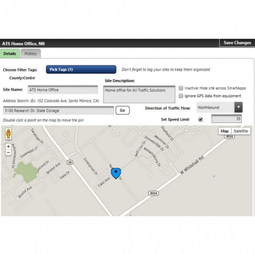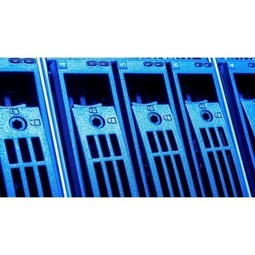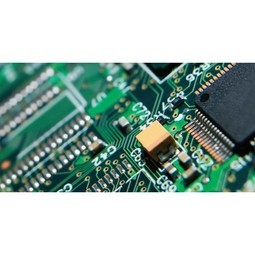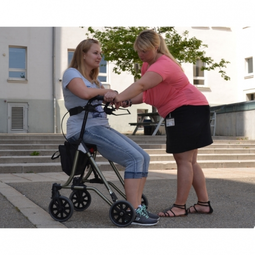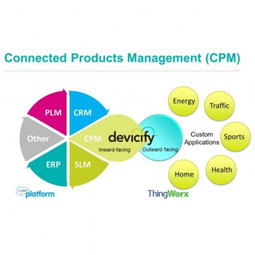Case Studies.
Our Case Study database tracks 18,927 case studies in the global enterprise technology ecosystem.
Filters allow you to explore case studies quickly and efficiently.
-
(11)
- (6)
- (6)
- (1)
- View all
-
(2)
- (2)
- (1)
-
(2)
- (1)
- (1)
-
(2)
- (2)
-
(1)
- (1)
- View all 7 Technologies
- (1)
- (1)
- (1)
- (1)
- (6)
- (1)
- (1)
- (1)
- (1)
- (1)
- (12)
Selected Filters
12 case studies
|
DeviceLynk Delivers Customized IIoT Solution
ThingWorx
Previously to working with ThingWorx, DeviceLynk built an IIoT platform but found it lacked scalability. They needed something to capture and handle data from an unlimited amount of devices and customers.
|
|
Thingworx Helps EET Monitor Real-Time Energy Savings
ThingWorx
Embedded Energy Technology (EET) wanted to build a dashboard for their customers to visualize the data analytics for the stream systems. They wanted the readings collected from the sensors to provide a complete picture of what is happening inside the component, and are displayed in a Web Portal that analyzes and presents the data in a concise format. The dashboard interface will also let customers set up email and text message alerts to be triggered when temperatures of the sensors customer select fall outside of the range they set. Summary reports are emailed monthly that highlight total energy savings, component health and month-over-month / year-over-year comparisons.
|
|
Splunk Partnership Ties Together Big Data & IoT Services
ThingWorx
Splunk was faced with the need to meet emerging customer demands for interfacing IoT projects to its suite of services. The company required an IoT partner that would be able to easily and quickly integrate with its Splunk Enterprise platform, rather than allocating development resources and time to building out an IoT interface and application platform.
|
|
LumenData Delivers Real-time Predictive Analytics through IoT
ThingWorx
In 2013, LumenData found itself in need of adding new real-time predictive analytics capabilities to its suite of services. To meet this need, LumenData acquired a state-of-the-art streaming data, capture and real-time predictive analytics company. This solved the pure predictive analytics end, but left LumenData with a need to be able to build IoT-targeted services.From an IoT perspective, LumenData was still missing the means to create suitable applications and dashboards that would make it easy for its customers to effortlessly make sense of whatever predictive analysis they might require.
|
|
Smart, Connected Applications Drive IoT Road Side Safety
ThingWorx
All Traffic Solutions needed to reduce software complexity so that they could quickly and effectively build out and enhance smart, connected applications without the need to develop their own backend infrastructure and development platform. Ted Graef, All Traffic Solution’s president, emphasizes that it is no longer enough for the company to deliver the best hardware; their hardware must become part of a larger ecosystem that is centered on automating all related business processes and evolving them into a simple-to-use suite of real-time, software-driven services. All Traffic Solutions took a significant step in its connected services evolution when the company decided to include standardized wireless capabilities in all of its products. The move required the company to its hardware costs, yet the belief was - and the reality turned out to be - that their customers would quickly be able to make up for the additional costs through significant improvements in workforce and customer service efficiency. The bold stroke, however, was not the conversion to wireless hardware. Rather, it was in recognizing that to be successful within a rapidly evolving mobile and wireless world, All Traffic Solutions had to also significantly enhance its software capabilities. Graef says the company understood that it had to deliver software that would provide valuable services, and make it easy for its customers to promptly make sense of the real-time data and alerts that would be transmitted and collected.
|
|
Elisa is Paving the Way with Their IoT Service Solution
ThingWorx
With an overwhelming response to the release of their IoT solution, Elisa needed a way to manage the flood in demand without compromising on their customer satisfaction or quality.
|
|
Springpath Gains Real-Time Intelligence and Improves Operational Efficiencies
ThingWorx
As the HCI market has grown increasingly crowded, Springpath sought to differentiate itself by providing enhanced serviceability to its customers. But it was lacking in its ability to provide fast customer issue resolution for both hardware and software components and in its ability to get meaningful, real-time intelligence from data. Springpath needed to create better operational efficiencies for its support organization. To better service its customers, Springpath would need a solution to resolve customer issues faster while collecting real-time customer data from systems to extract better insights for both internal support teams and end customers alike. Building a solution would require quick ingest and parsing of data – which was at the time often sent in the form of complex log files – and the ability to present it as actionable information. Further, a solution would need to enable support engineers to provide quick issue resolution to minimize downtime. Ideally, Springpath wanted customers to get full visibility into their own systems – and thereby be able to perform timely maintenance tasks – with the goal of maximizing uptime and ensuring optimal system performance. In addition, a solution should integrate with their issue management system, Salesforce.com Service Portal, for easy access for both the in-house support team and end-customers. “Offering world-class Customer Service in the IoT era requires a comprehensive and scalable Analytics platform that is well-integrated with an existing Support workflow,” says Brett Flinchum, VP of Global Customer Success at Springpath.
|
|
Delivers Business Differentiation to Vantron
ThingWorx
Taking advantage of the fast growth of China and the growing demands in embedded computer systems, Vantron technology was established in 2002 by Silicon Valley professionals and headquartered in Chengdu, China. In addition to readyto-run low-power embedded systems, Vantron also provides assistance in application software development, tailoring its embedded systems based on customers’ requirements, and offering turn-key manufacturing services. With customers in industries such as healthcare, heavy equipment, vehicle tracking and telematics, looking for customized solutions, Vantron saw more and more customers looking for interconnectivity through the cloud so that they could access and interact with their equipment remotely
|
|
Furtwangen University develops “IoT Walker” and “IoT Wheelchair” using PTC
ThingWorx
Recent studies have found that patients return to the hospital at an alarmingly high rate among those who are hospitalized for heart failure, almost one in four are re-hospitalized within 30 days. Such a focus has led to novel approaches to improve patient care and reduce the need for re-hospitalization. Many of these strategies depend on technologies that employ remote patient monitoring (RPM), using the Internet of Things (IoT) and cloud computing, so that their health care team can track their progress without needing them to come to the office. At the Hochschule Furtwangen University (HFU) in Germany, students across multiple disciplines are working to develop this RPM technology into mechanical devices to aid in monitoring patients remotely. Their idea is to utilize the Internet of Things to develop “smart” wheelchairs and walkers that will transmit patient information to a dashboard developed in PTC’s ThingWorx to monitor various parameters and develop alarms specific to each patient. Achim Bumüller, Senior Assistant in the Mechanical and Medical Engineering Department, is managing the project along with five other faculty members dedicated to each discipline such as electronics, informatics, and mechanical engineering. “Since our university is located in the Black Forest of Germany in Baden-Württemberg, the project was originally developed due to the need for remote monitoring in the small villages that are 20-30 kilometers from their nearest doctor or hospital; however, the target has grown to include the necessity of monitoring patients inside a hospital, nursing home or other areas,” states Bumüller.
|
|
TU Darmstadt students make packing smart with ThingWorx
ThingWorx
An Advanced Design Project toward IoT was open to a handful ofundergraduate students in TU Darmstadt from various backgrounds. The team’s goal was to develop an IoT solution by semester’s end.Based on their personal experience and the survey results—which told them 85% of people had forgotten to pack something important on a trip—they decided to apply the IoT to the world of travel. Armed with ThingWorx and PTC University eLearning Libraries, they began to develop the project idea and scope.
|
|
University Duisburg Launches NectOne for IoT Research
ThingWorx
In order for the IoT to become fully operationalized, system integration of devices and data with existing businesses systems and processes is vital. In reality, many manufacturing companies like NectOne® with individual systems often find it very difficult to build and use intelligent structures between their systems. Many of the data sources as well as connected systems may be external to the business. This systems integration work can be complex and difficult to manage, but is vital to achieving business objectives. The final goal is to deliver cloud base production control.
|
|
Devicify – State-of-the-Art Internet of Things Business Transformation
ThingWorx
Devicify required a means to quickly build "connected IoT apps” without building a connected applications platform themselves, an expensive and time consuming option.There is a need for Devicify's Connected Products Management (CPM) product to create agile development environments for both technical and business users within a given company. Johnson notes that speeding up the software development process is critical, but the larger value is in combining this with agility in adapting processes that support new business services. Johnson suggests that the resulting new strategic differentiators are what will drive business transformation within the IoT space.Business users and customers stand to gain tremendously from the effective use of Devicify CPM because the technical users are able to easily and quickly develop the software needed to create full end to end solutions. Devicify specifically engaged with ThingWorx so that these technical users could easily connect the edge devices and end points established by the connected products themselves to the business processes and applications they fed into to create the innovative business services that ultimately serve as strategic business differentiators.
|




